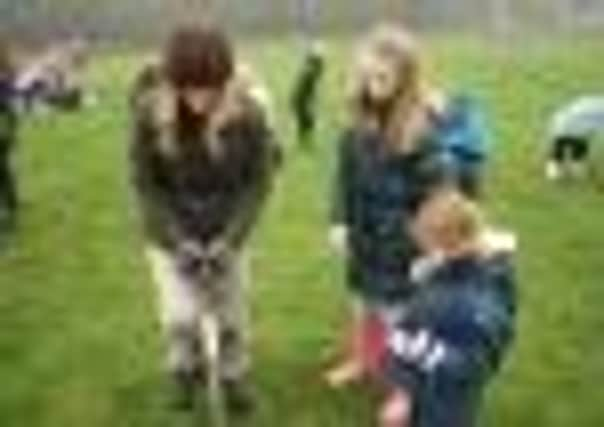Planting ideas in young minds


Thorp Perrow near Bedale hosts one of this country’s leading private collections of trees, and over the past few days numbers have been boosted by a donation of saplings from the Woodland Trust. Children from three nearby primary schools have spent this week helping to plant 105 native trees to mark the trust’s jubilee.
These will be joined next week by a Royal Oak, propagated on the Royal Household’s estates, to be planted jointly by pupils from the three schools involved, Bedale Primary, Snape Community Primary and Thornton Watlass Primary.
Advertisement
Hide AdAdvertisement
Hide AdFaith Roskrow, the curator at Thorp Perrow, heard about the trust handing out planting packs for ‘community’ trees.
“You could pick which pack you wanted, whether it was for wildlife, forestry, for year-round colour - as long as you planted them and made a community event out of it,” says Faith.
“I thought it would be ideal to get schools involved because I’m really, really keen to get children into the Arboretum.”
As well as the mass planting here, a tree will be handed over to each of the schools to plant in their own grounds. They are all native species.
Advertisement
Hide AdAdvertisement
Hide Ad“Today they have been planting silver birch and rowan and we’ve got a cherry avenue and hazel. They’re good for wildlife and good for year-round colour.
“They’re all trees which the children will have seen. I try to get trees that they would notice, that fit in with where we live.”
Faith Roskrow reckons rural children have a much better knowledge of how nature works. “I think that children around this area probably know more than your city child, or town child.
“But I don’t think many children know what an arboretum is. I don’t think many adults know what an arboretum is, and they don’t seem to understand that there are so many different types of trees. They were picking up oak leaves today and there are so many different types of oak leaf. It’s quite fascinating for them to say ‘that’s an Oak leaf, that’s an Oak leaf, that’s an Oak leaf’ they’re all slightly different.
Advertisement
Hide AdAdvertisement
Hide Ad“In the past couple of years we’ve had very dry springs and I think that’s a little bit of a worry, and I think that trees have been particularly stressed because of that. The harsh winters are actually quite good for our native trees, and those we have lost aren’t native.
“We’ve become a bit spoilt with what we can grow in our gardens, and people are finding it shocking that they have lost their olive tree or their bay tree, when really we shouldn’t be able to grow them in this country.”
The biggest threat to our native trees, according to Faith, are human beings.
“I just think we don’t take enough care of them. There’s not enough education out there to teach people about trees, particularly children which is why I’m aiming at kids, because they are the future.”
SUCCESS THAT GREW AND GREW
Advertisement
Hide AdAdvertisement
Hide AdThorp Perrow estate’s for ornamental growing dates back to the 19th century when Lady Augusta Milbank first planted a Pinetum (conifers planted for ornamental purposes).
The estate was bought by William Ropner, in 1927. His son Sir Leonard developed the arboretum, but it fell into disrepair. His son, the present owner Sir John Ropner, rebuilt the gardens, working with Alan Mitchell, the dendrologist.
During the summer of 2004, 67 trees within the arboretum were recorded and designated as “Champion Trees” by The Tree Register of the British Isles.
www.thorpperrow.com